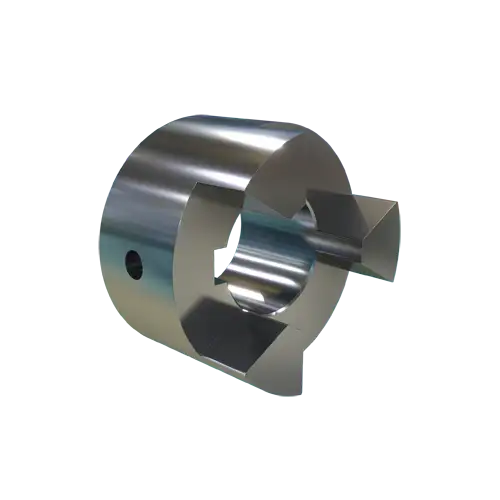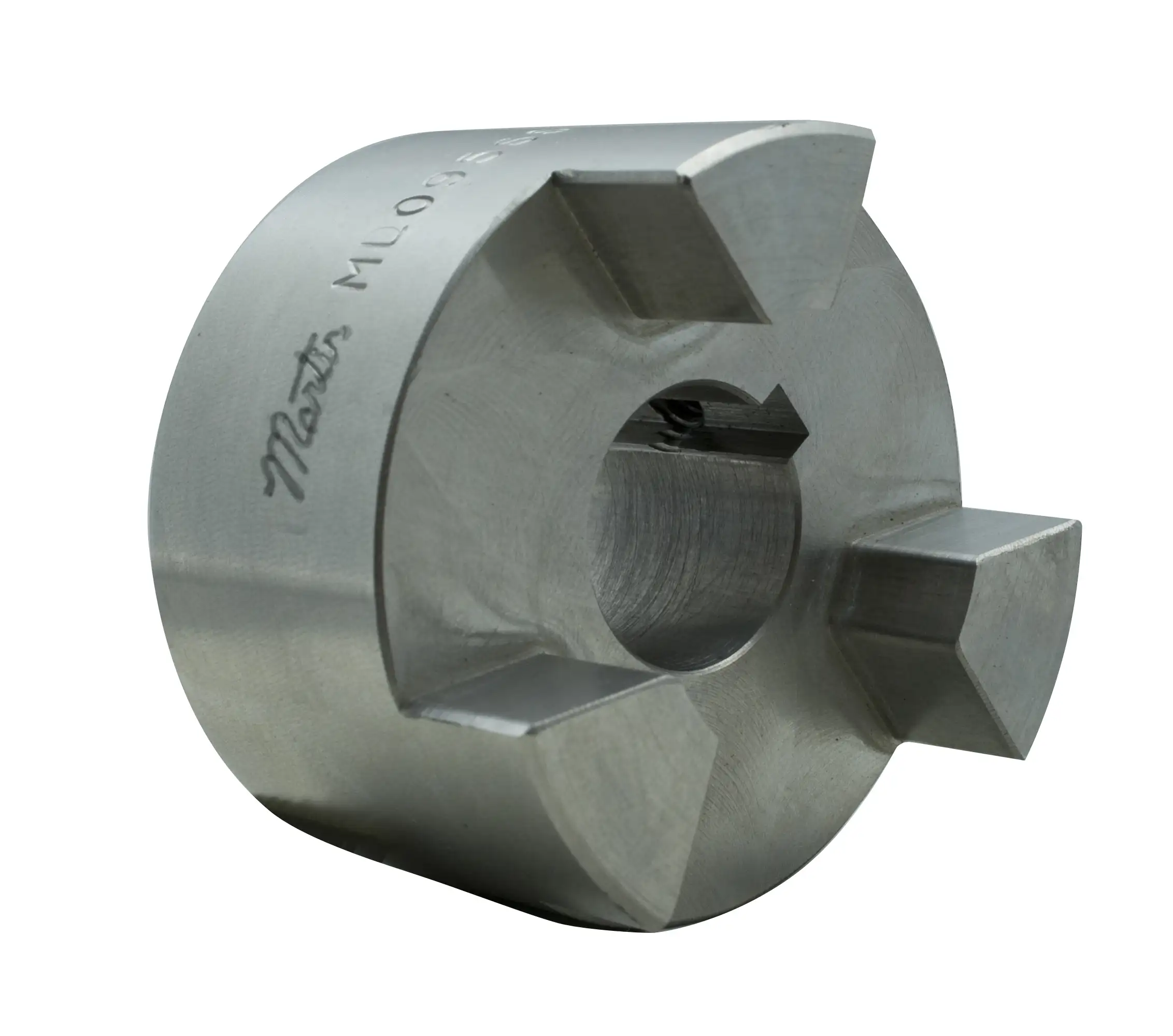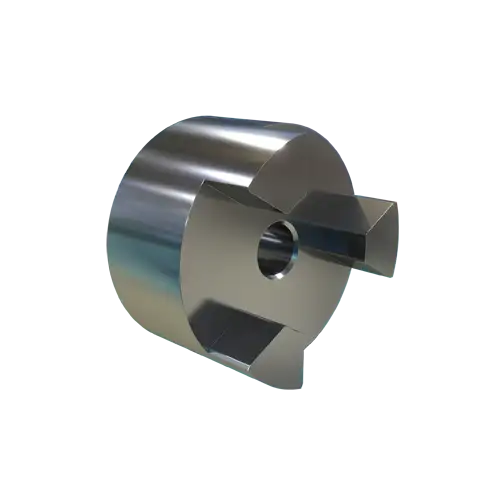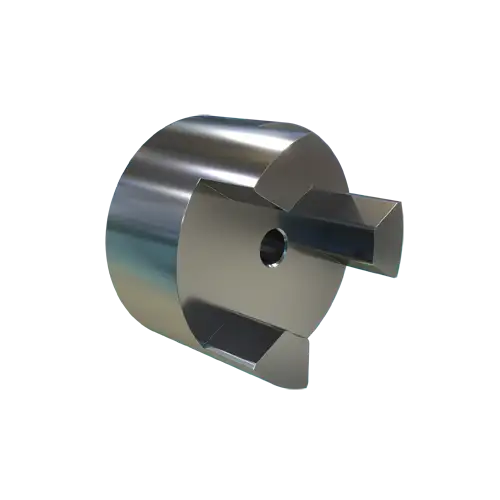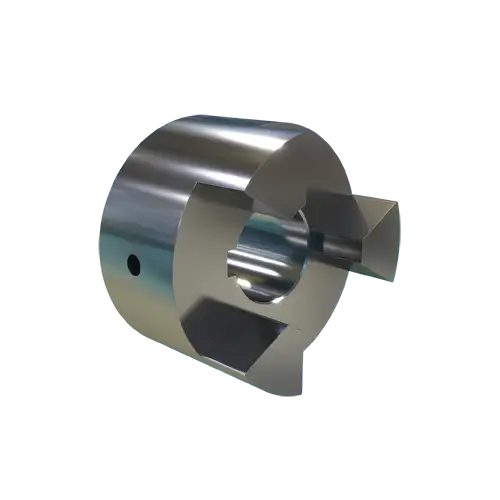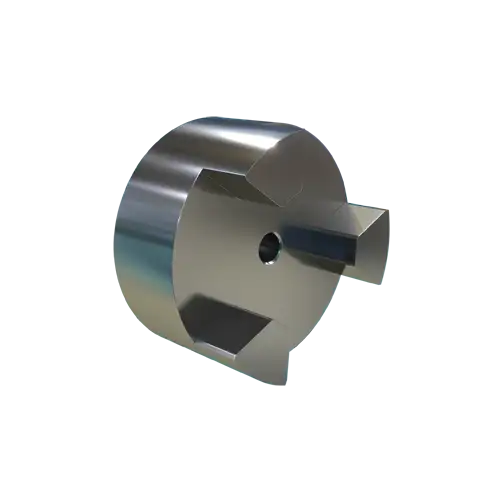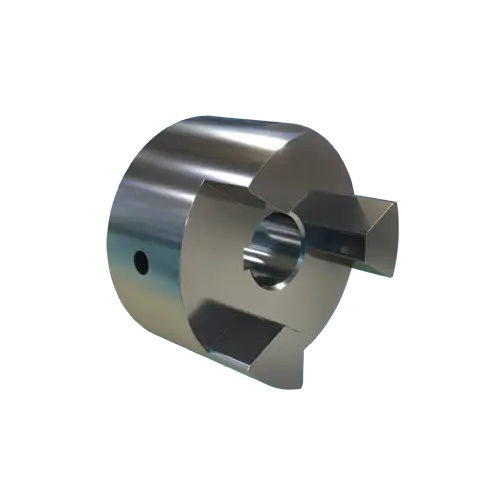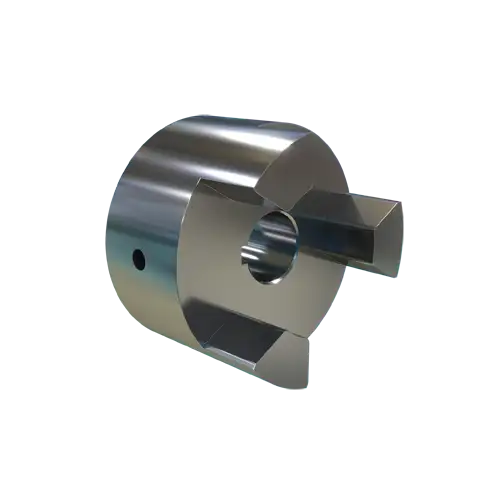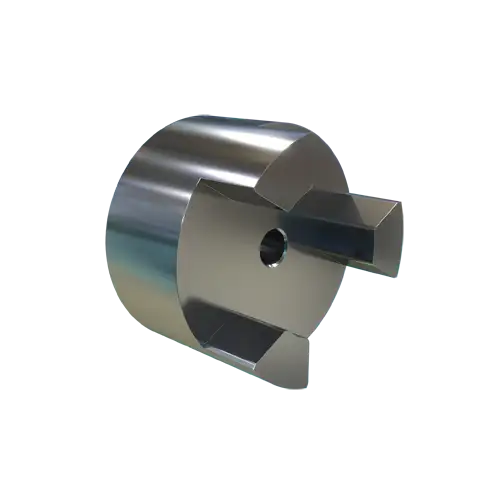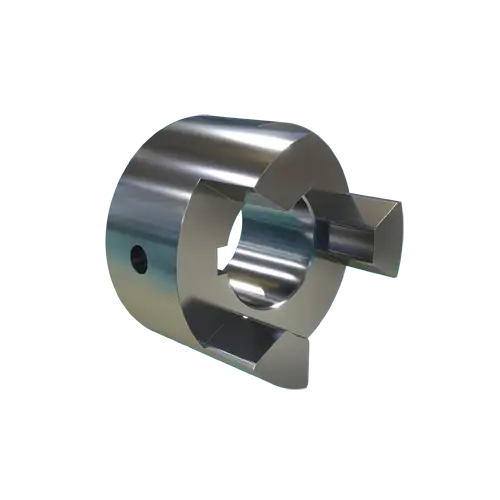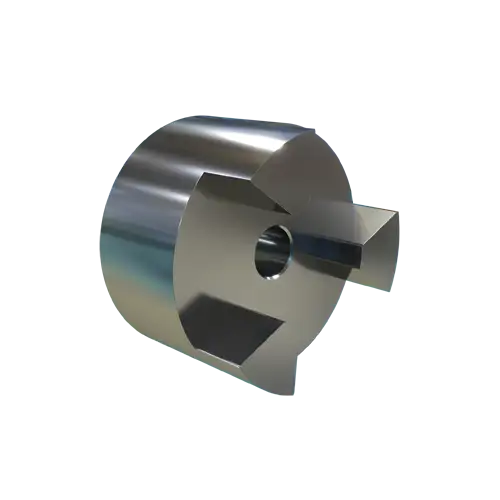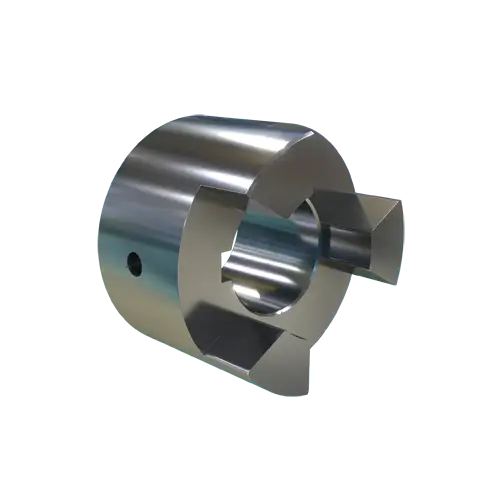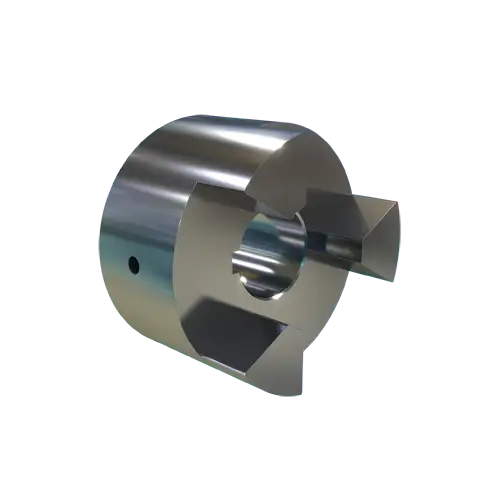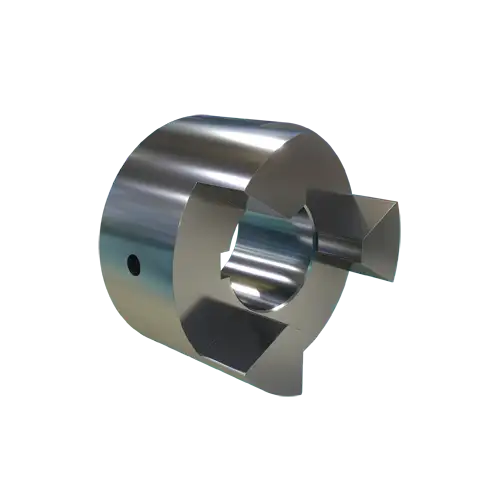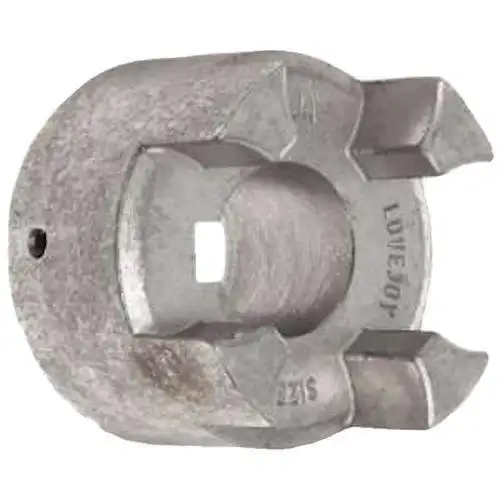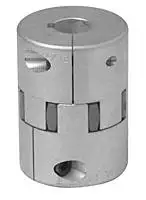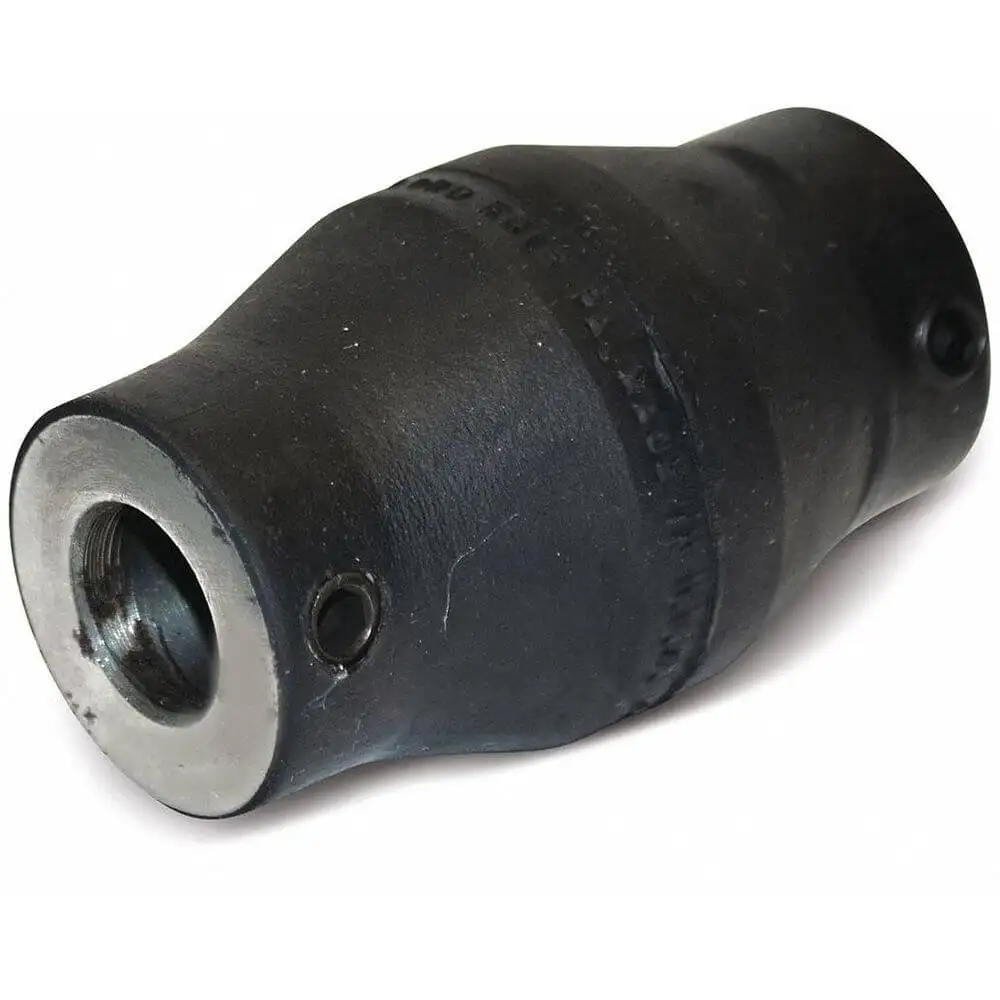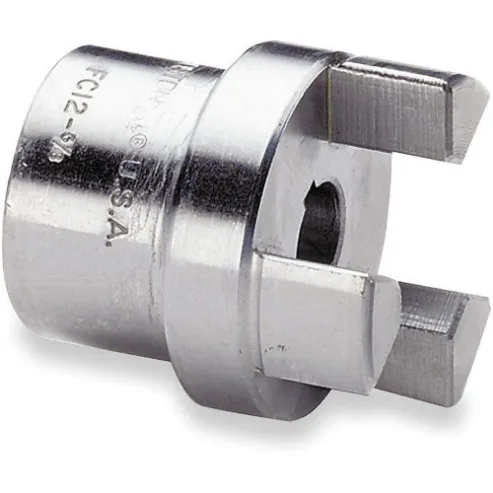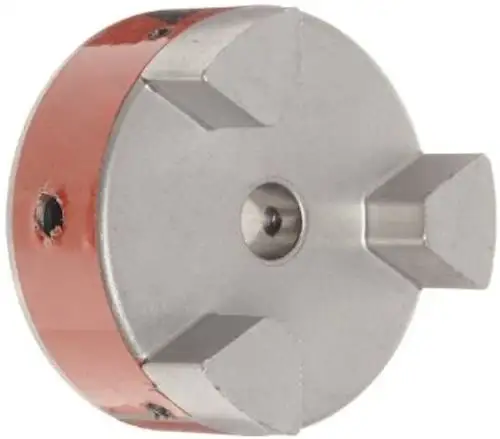Jaw Coupling Hubs
Jaw couplings are a type of flexible couplings designed to link two rotating shafts that are not properly aligned for transferring the rotational power or torque from one shaft to another. The jaw couplings are suitable for diverse industrial applications due to their versatile & robust construction and good speed capability, chemical resistance & dampening capability. Jaw couplings are easy to install, as they consist of only two jaw coupling hubs and a spider. These jaw coupling hubs are attached to the shafts and the spider flexes between the hubs for accommodating the misalignment & shocks. Shaft misalignments are mostly radial, parallel or angular and cause complications to transferring rotational power from one shaft to the other in the form of loads, vibrations, stresses and other forces, which change as per the type of misalignment.
The jaw coupling hubs are popular due to their fail-safe design that ensures interlocking of the coupling & continued operation (up to a certain extent) even after the elastomeric spider fails, wears out or gets loosened. Unlike gear, grid or chain couplings, jaw coupling hubs are also maintenance-free as they do not require periodic application of grease or additional maintenance (provided that the spider remains intact). These jaw coupling hubs are made of cast iron, powder metal, sintered iron, sintered carbon steel, steel or zinc alloy to ensure high compression strength and durability. They are also offered in aluminium or stainless steel construction for lightweight and resistance to corrosion in food & pharmaceutical environments.
Lovejoy jaw coupling hubs are available in two broad types: straight jaw coupling hubs and curved jaw coupling hubs. Straight jaw hubs are made from a diverse range of materials and feature straight jaws for adjusting to various styles of spiders. They are used with open centre spiders, snap wrap spiders with retainer rings; closed centre spiders having Nitrile Butadiene (Buna N), urethane, Hytrel or bronze construction. Curved jaw coupling hubs (Lovejoy CJ Series) on the other hand, feature a curved jaw profile that concentrates the torque to the central region of the spider's limbs, thereby improving the efficiency of the elastomer material and reduces rotational backlash. They are mostly used with open centre elastomeric spiders to accommodate shafts having little separation.
Choose from a wide range of these jaw coupling hubs, available in both unbored and bored variants on Raptor Supplies. The bored variants are offered in bore sizes ranging from 1/8 to 4 inches.
 £ GBPChange Country
£ GBPChange Country

